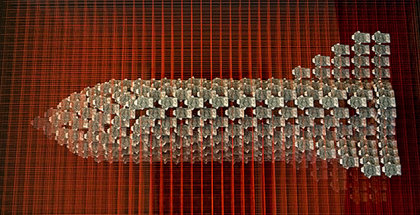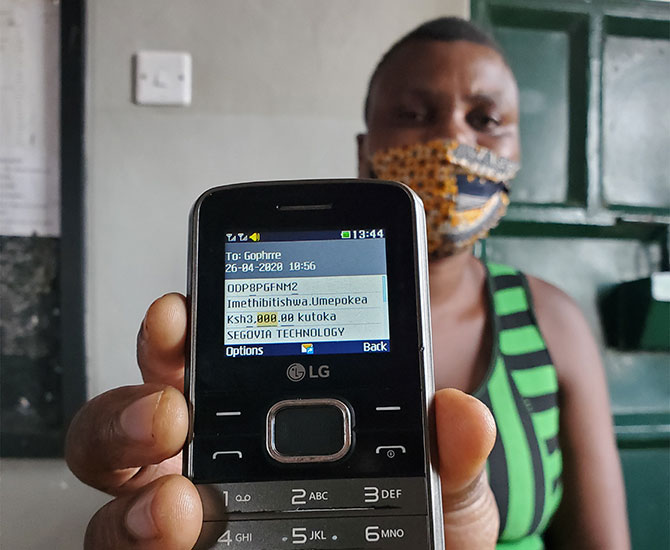Whimsical Mayhem & Conceptual Metamorphoses
Personal Structures – Open Borders
57th Biennale di Venezia 2017
Tiziana Borghese
One of the many collateral exhibitions running in parallel to the 57th Venice Biennale is Personal Structures – Open Borders, curated by Rene Rietmeyer, exhibiting in a number of venues throughout Venice under the auspices of the Global Art Affairs Foundation, a not for profit organisation founded in 2009 and exhibiting at the Venice Biennale since 2011.
In 2013 I interviewed Mr Rietmeyer about the Foundation’s aims. At that time they were exhibiting only at the Palazzo Bembo. This year they have expanded their exhibition to include works at the Palazzo Mora, the Palazzo Rossini, the Palazzo Michiel and the Giardini della Marinaressa. The Foundation’s main focus is to organize exhibitions, symposia, publish texts on art and facilitate art projects.
Mr Rietmeyer travels the world to find artists who fit his curatorial vision. This year’s theme is Personal Structures – Open Borders. This expansion of gallery spaces has brought together over 250 artists from all over the world, including some well known figures like Joseph Kosuth, whose blue neon light installation against black walls, The walls in my room should be painted this colour, is a fun filled notable contribution. Also of note is the Chinese artist, Li-Jen Shih, whose bronze large and small rhino statues, videos and installations link the potential extinction of the rhino to humanity’s own vulnerabilities. He stresses the importance of learning to coexist in harmony with the animal world. His belief that the rhino is a mystic creature, a symbol of fortune and kindness, and that its extinction will somehow affect humanity’s future stems from a sense that the “circle of life” connects us all. His giant King Kong Rhino has a nobility, which displays the spirit of his Eastern philosophy.

Joseph Kosuth, ‘The walls in my room should be painted this colour’ (detail). Installation image by Tiziana Borghese.
At the Palazzo Bembo, Australia is well represented by five artists: Juan Ford, Chris Bond, Graham Hay, Peter Rosman, and George Tzikas.
Juan Ford never disappoints. His technical mastery and layered conceptual subject matter create intriguing and at the same time aesthetically beautiful works. Here his two diptychs are no exception. As you walk into the Ford/Bond room you are greeted by the first Ford diptych, which at first looks like a snake caught up in gum leaves. On further inspection, Ford’s unique signature detail of intertwining his images with hyperrealist pieces of painted coloured masking tape draws the viewer in to conduct a closer inspection and analysis. Here the white tape seems to suggest nature being interfered with by human activity … or perhaps it’s the other way round – humanity being interfered with by nature.
The shape of the branch on the left suggests a serpentine composition, which leads the eye to the canvas on the right, a painted x-ray of a snake, which has swallowed a light bulb meticulously painted in white/gray against a black background. This, without doubt, is nature being interfered with by humanity’s thoughtless disposal of rubbish. Life and death are intrinsically connected, light and dark contrasted from one canvas to the other. The first canvas is imbued with an intense white light, contrasted with the black background of the second canvas depicting the snake. Ford’s intelligent yet playful dealing of deep philosophical issues in a unique voice unmistakably his own. His visual ambiguities create an intriguing metamorphosis between reality and fiction.

Juan Ford, ‘A View With Duplicity’ 2016-2017, oil on linen, 122 x 107cm. Courtesy of the artist and THIS IS NO FANTASY + Dianne Tanzer gallery.
The hyperrealist diptych on the adjacent wall is of a man dressed up in a skeleton outfit, his head covered by gum leaves. The only revealing factor is a pair of sunglasses, perhaps betraying the identity of the subject as a self-portrait. This painting also uses the intense white light and photographic painting style of the first set, contrasted by a darker treatment of a still life, reminiscent of Flemish masters (dark brown tones, strong chiaroscuro, and momento mori subjects).
The first canvas has the Ford sense of humour and fun. The skeletal subject is holding a branch of blooming cherry blossoms upon which a little bird is resting. The second canvas of banksias and Australian flowers has an eerie quality, which contrasts with the whimsicality of its partner. Together, they emanate a surreal coded message. Like the first set these too suggest the inextricable linking of light and dark, life and death. A faceless man is being devoured by Australia flora, suggesting subconscious pairings and associations with Greek mythology, where maidens are turned into trees to escape “evil” alternate outcomes – Laurels and Daphnes – and now in Venice Ford transitions from human to plant, or maybe it is the other way round. In any case the two works create a curiosity and aesthetic lushness, which cannot fail to impress.

Juan Ford, ‘Devil Never Even Lived’, 2016-2017. oil on linen, 120 x 300 cm. Courtesy of the artist and THIS IS NO FANTASY + Dianne Tanzer gallery.
Similarly, Chris Bond’s work is conceptually rich and full of philosophical layers, which entice the viewer to engage in an aesthetic and cerebral questioning of the binaries between perceived reality and subjective understanding. On one wall are two books, black and gray, in white frames. There is no writing on either and visually they appear identical. Is one a found object and the other a copy? Or are they both fakes/originals. The line between empirical reality and subjective interpretation is very thin. The original could still be in Bond’s studio, or they could be both fictitious constructs. Perhaps the fundamental question is not to hazard a guess one way or the other, but to embrace Bond’s established practice of balancing between the original and the meticulously detailed reproduction. Truth and fiction collide in a visual and conceptual intertwining as the material world fuses and plays games with our idea of art and reality. It is a kind of metamorphosis of materiality.
On an adjacent wall Bond has installed two library books at a near 45-degree angles, reminiscent of hunting trophies of deer, or the horse installations of Maurizio Cattelan. Some part of the book is chopped off as it appears to enter the wall. Bond’s technical mastery is evident in his treatment of detail. The library code … the library stamps … the crinkling of the cover through overuse … the strategic fading. The spectator is left to wonder about the degree of authenticity of each item. Again, truth versus fiction.
Graham Hay, also displays a sense of fun and ambiguity. His installation of ceramic cones in an arch-like totem arrangement intentionally looks like the entrance to a secret tribal sacrificial site, like Hollywood imagined entrances in Indiana Jones or Tarzan movies. His video of the opening night adds to the whimsicality of the work as we see invited guests being given opening night drinks in individual cones taken from the installation, which they could then take away with them.
The idea of Hay’s interactive installation works on two levels. The cones were produced by his students, who shaped each one by hand, giving them their uniqueness. The students were then asked to sign each piece, giving them an individual authorship. Once installed, each viewer visiting the installation at the Palazzo Bembo could then reshape the grouping and take a cone away, until their supply of cones became too reduced and more had to be produced.
Conceptually, the piece could be linked to the works of Felix Gonzales-Torre, whose liquorice bullets could be taken away and rearranged by viewers. It is a rethinking of the idea that art should not be touched, only seen. In both pieces the look of the work relies primarily on those who choose to physically engage with it, so Hay’s ever-changing arrangement physically and aesthetically is dependent on the collaborative creators and individual aesthetics of the viewers who feel the need to change the arrangement to suit their own artistic sensitivities. It is a type of relational aesthetics dependent on those who choose to collaborate (or not) in its organic reimagining.
Peter Rosman’s Tatlin inspired sculptures are a tribute to the working man and woman. Found objects as diverse as irons and trolleys are combined to bring together a movable work, which can be folded away and opened up, as in street art for the masses in Constructivist Russia. Visually stunning, they are reminiscent of children’s mobiles or miniature tin movable toys that were so appealing in the 50s and 60s.
On one wall there is a line of simulated ATM machines in various colours. Their contents are iron sketchbooks, rulers and drawing instruments, a segmented camera and various tool-like objects, which have a sculptural quality, but are also a reminder that art is commercial as well as aesthetic.
Finally, George Tzikas’ two oil paintings are rich abstracts with strong contrasting colours. His sole contribution to an artist statement is a poem describing the absence of light equating to suffering … this is a mental metamorphosis of colour and light, a mischievous play on subject matter which can only be resolved by each individual viewer. Like Dante’s Inferno they propel the spectator into associations with religion and the idea of being in a burning hell. Smoke, or mystic clouds, are illuminated with splashes of white paint … or they could just be representations of glorious sunsets. The artist does not explain, and that is its appeal.
The exhibition closes in November 2017.
For more information on Personal Structures – Open Borders see the European Cultural Centre website – europeanculturalcentre.eu
































